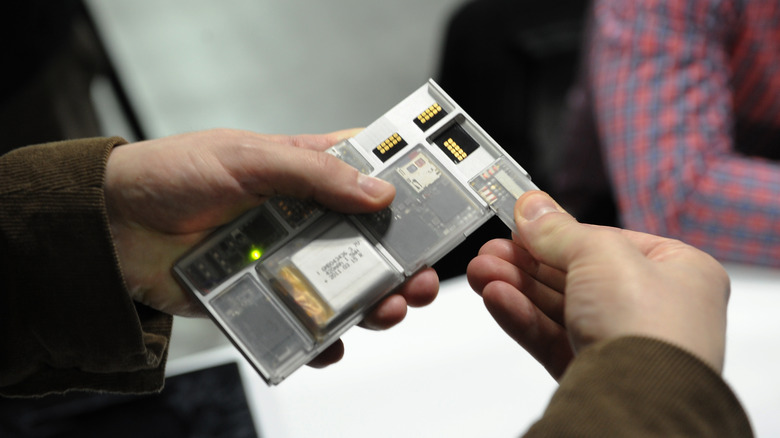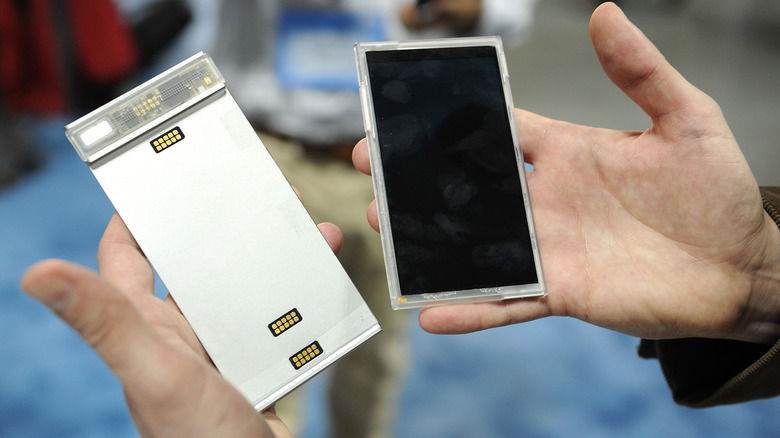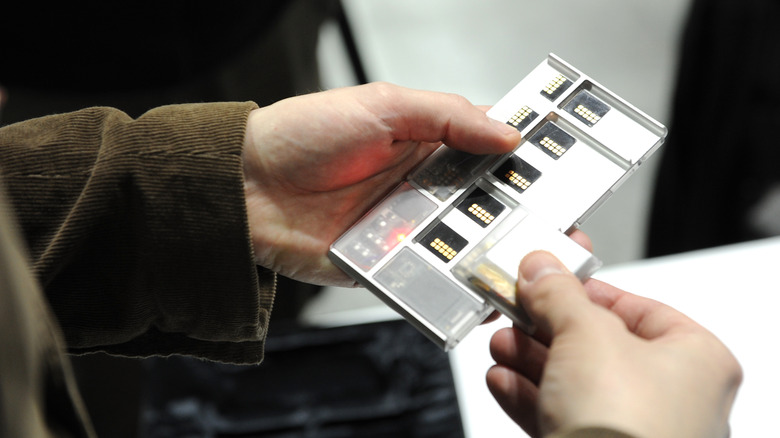Why Google's Project Ara Modular Smartphone Was A Complete Failure
Smartphone enthusiasts around the world would almost certainly recall the time when modular smartphones were touted as the next big thing. With several big names in the space — including Google, Motorola, and LG — backing the modular form factor, a large segment of consumers and tech enthusiasts deduced that modular smartphones were, indeed, the future. And why not? The idea of a smartphone that could be customized by the user and upgraded when the time came was downright revolutionary and seemed a recipe for runaway success.
But mention of modular smartphones would be incomplete without talking about Project Ara, arguably the most comprehensive, well-thought-out scheme aimed at making modular smartphones mainstream. Yet, almost a decade later, modular smartphones are nowhere to be seen, and Project Ara is all but forgotten. Nearly every brand seems to have given up on them, and one of the big names in the modular smartphones space even exited the industry.
Smartphones have also remained largely the same in terms of the slab form factor — with the notable exception of foldable phones. That begs the question; Why did the supposedly revolutionary idea of modular smartphones fail to take off, and more importantly, why did Google's Project Ara disappear?
The modular dream
Even though modular smartphones were proposed in the early days of the smartphone, the idea gained particular prominence in the early 2010s after Motorola, which was then owned by Google, decided to kickstart a project to create the world's first mass-produced modular smartphone. Google called the mission "Project Ara" which, incidentally, was also a part of Google's Advanced Technology and Projects (ATAP) group.
Project Ara received the go-ahead in 2013, and the Google and Motorola teams spent countless hours perfecting the recipe for modular smartphones. Initial progress was rapid, and the team even developed a prototype of the first modular phone in April 2015. Called the 'Spiral 1,' this prototype featured a basic frame that could accommodate modular components. A year later, the Project Ara team developed the Spiral 2, which was a more refined version of the Spiral 1 with a larger, better display.
While there was considerable media interest around Google's first two modular prototypes, the company soon determined that the feasibility and commercial viability of modular phones was questionable. A little over a year after Google showcased the Spiral 2, the company officially announced that it was canceling Project Ara and, along with it, Google's famed ATAP group.
Despite the setbacks, however, some companies — albeit smaller in size and with fewer resources than Google — are still working on developing a modular smartphone that does it all.
Everything wrong with modular phones
While the idea of modular smartphones hasn't died off, many analysts now believe that Google's 2013 and 2014 technology was not advanced enough to develop a practical and reliable design. Fast forward to 2023, and given the lack of modular smartphones in the market, it is safe to assume that modular smartphone users — to this day — continue to face technology-related issues.
What's more, not many people outside of tech enthusiasts, journalists, and writers were enthusiastic about going modular in the first place. Consumers desire a simple device that works without extra features. However, that proved was impossible for a modular phone to achieve during Project Ara — primarily because of the lack of standardization between part makers and the phone maker. Then there were questions about the durability of the modular phone and it individual components.
Google seemed to have foreseen the lack of consumer interest in modular phones, and in 2016, after it showcased the Spiral 2, it pulled the plug on the program. While the search giant did not mention a specific reason for the cancellation, there was a consensus that finding commercial success in a phone with interchangeable pieces was just not feasible.


